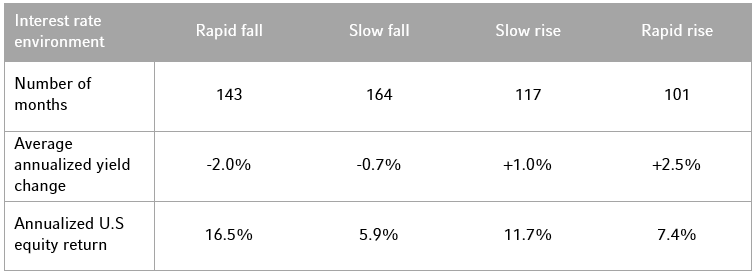Correlations can be a misleading measure of the interaction between economic variables. Here, we take a look at interest rates and the stock market.
Consider the cause-and-effect chains that exist between the economy, interest rates, and the stock market. Economic growth should in general be good news for the stock market, and it should also generally mean upward pressure on interest rates. A weak economy should be the opposite.
However, the stock market tends to welcome news of a cut in rates, and dislike increases.
This creates a slightly complex picture as regards the interaction between interest rates and the stock market. On the one hand, the direct connection might be expected to lead to a negative correlation; falling rates being good for markets. On the other hand, the way that the broader economic picture affects each would point to a positive correlation; when the economy is strong, we expect rising rates and strong markets.
In isolation, a rate increase can be seen as bad news for the market, but as a symptom of a strong economy it can be seen as good news. These relationships aren’t really that confusing, but they become so if we try to reduce them to a single correlation number.
Evidence of the nuanced relationship can be found in historical returns patterns as shown in the table below: U.S equities did well when rates rose slowly (i.e. rate less than 1% per year), but not so well when rates rose rapidly (perhaps because rapid increases are often associated with economic distress); meanwhile, when rates fell, U.S. equities did better when they fell rapidly, and not so well when they fell slowly.
Annualized returns on U.S. equities in different interest rate environments (This analysis covered the period January 1970-September 2013).
Source: Russell Investments (Madden & Totten (2014) When rates rise, do stocks fall?)

